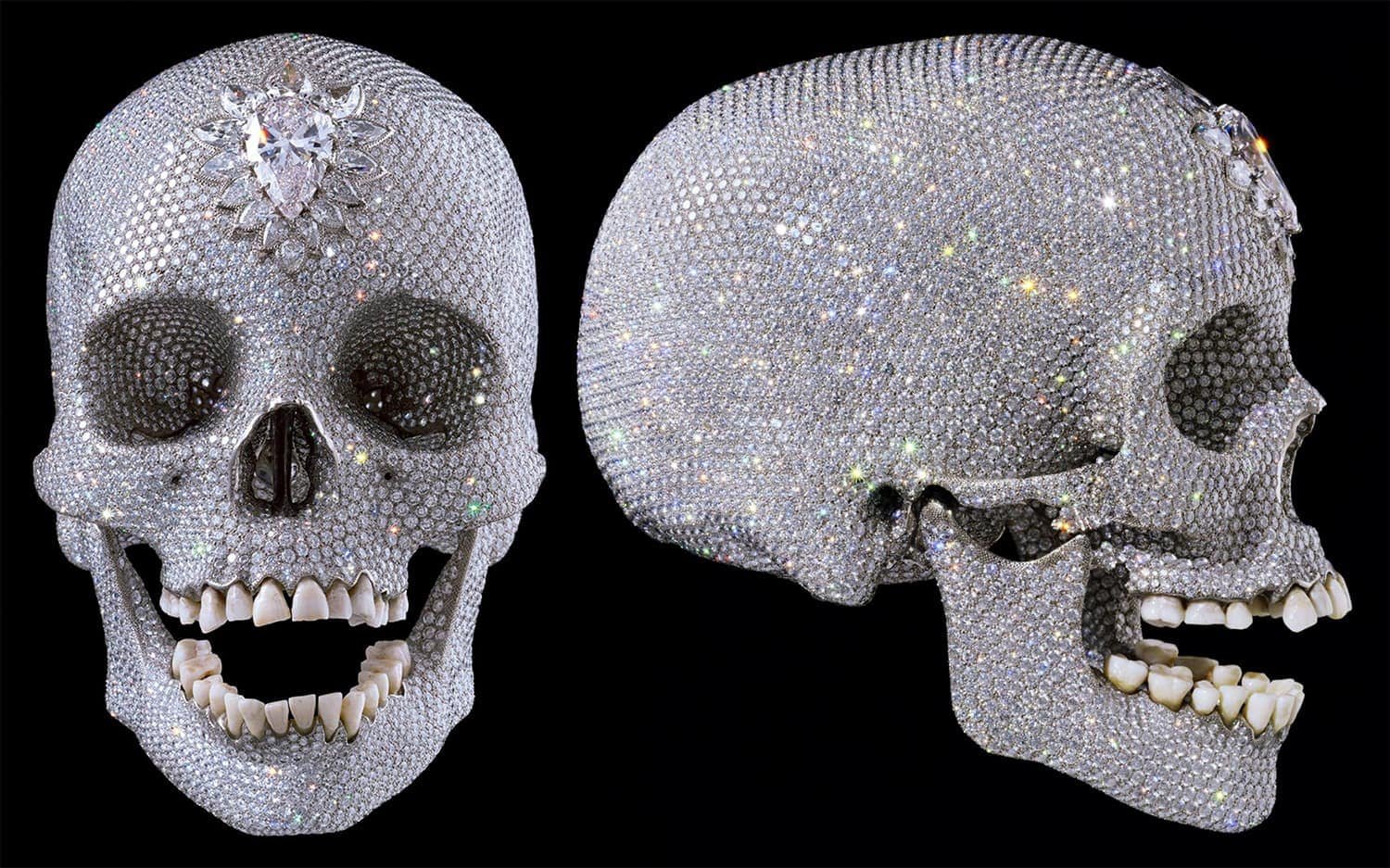The Weird and Wonderful World of Sculpture Materials
For the Love of God, Damien Hirst
Art history is full of surprises, but nothing is quite as unpredictable as the materials artists have used to make sculptures. Sure, we all know about marble, bronze, and wood. But those are the safe choices, the “let’s follow tradition” options. Some artists, however, have looked at unconventional materials and thought, Why not? The result is a fascinating—and sometimes bizarre—history of sculpture that proves creativity knows no limits.
Hair, Bones, and Other Stuff You’d Rather Not Touch
Let’s start with something intimate: hair. Yes, human hair—ew. Victorian mourning art often included locks of loved ones’ hair woven into intricate designs or added to small sculptures. Sweet? Sure. Creepy? Also yes.
Moving on to bones—literally the foundation of the human body—artists like Damien Hirst have turned them into art. Hirst’s work often features skeletons, both human and animal, as a way of exploring mortality. But he’s far from the first. Indigenous cultures worldwide have long used bones in ceremonial sculptures.
Food as Art (No, Not in That Instagrammable Way)
Artists have a long tradition of using food for sculptures. Janine Antoni, for example, carved sculptures out of chocolate and lard. Her work Gnaw (1992) involved literally biting into 600-pound blocks of each material. The chocolate block was a commentary on indulgence; the lard, a critique of body image.
Gnaw, Janine Antoni
Body Fluids (Yes, Really)
If you thought hair and bones were weird, buckle up. Artists have been known to use body fluids in their sculptures. Marc Quinn’s Self (1991) is a frozen cast of his own head made entirely of his blood. He collects the blood over several months, freezes it, and molds it into his likeness. The work raises questions about identity and mortality, but let’s be honest—it also raises questions about hygiene.
Self, Marc Quinn
Not to be outdone, Piero Manzoni canned his own… you know… shit in 1961 and sold it as art. Each can of Artist’s Shit was labeled and sold by weight, priced according to the cost of gold at the time. It’s as much a statement on the art market as it is a physical object.
Natural Elements That Defy Expectations
Nature has always been a source of inspiration, but some artists take it literally. Andy Goldsworthy uses leaves, stones, ice, and twigs to create ephemeral sculptures that exist for mere moments before nature reclaims them. These aren’t meant to last, which makes them all the more poignant.
Meanwhile, Olafur Eliasson has worked with ice harvested from melting glaciers. His Ice Watch installations place large chunks of Arctic ice in urban settings, forcing viewers to confront the reality of climate change as the ice slowly melts.
Everyday Objects Reimagined
Marcel Duchamp’s readymades deserve a shoutout here. His Fountain (1917), a urinal turned on its side, is one of the most infamous sculptures in art history. By taking an everyday object and declaring it art, Duchamp forever changed how we think about materials.
Other artists have taken this idea and run with it. Yayoi Kusama once created a series of sculptures covered in soft, stuffed phallic shapes. Her work blurs the line between the absurd and the unsettling, making everyday objects like furniture seem downright alien.
Fountain, Marcel Duchamp
Modern Tech Meets Sculpture
Artists today are experimenting with technology in ways that would make Michelangelo’s head spin. 3D printing has opened up new possibilities for creating sculptures from materials like resin, bioplastics, and even concrete. Artists like Anouk Wipprecht are incorporating robotics into their work, creating sculptures that move, react, and interact with viewers.
Some, like Daan Roosegaarde, have gone a step further by using living organisms in their work. Roosegaarde’s Bioluminescent Algae sculptures glow in the dark, powered by the same natural phenomenon that lights up ocean waves at night.
Why It All Matters
At first glance, some of these materials might seem like gimmicks. But when you dig deeper, you realize that the choice of material is often as meaningful as the sculpture itself. Whether it’s chocolate, hair, or melting ice, unconventional materials challenge us to see the world differently. They force us to ask questions, not just about art, but about life, culture, and the environment.



